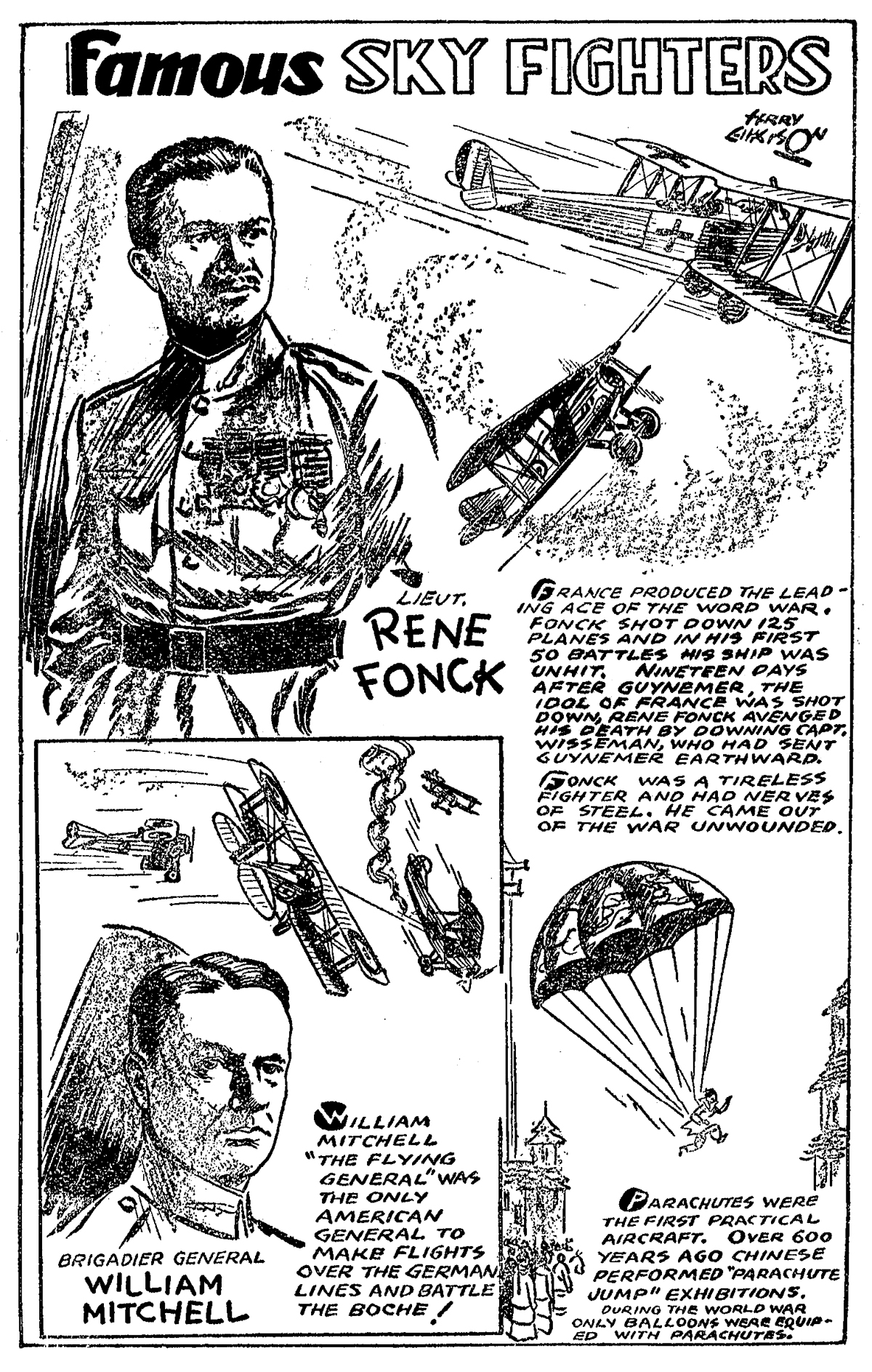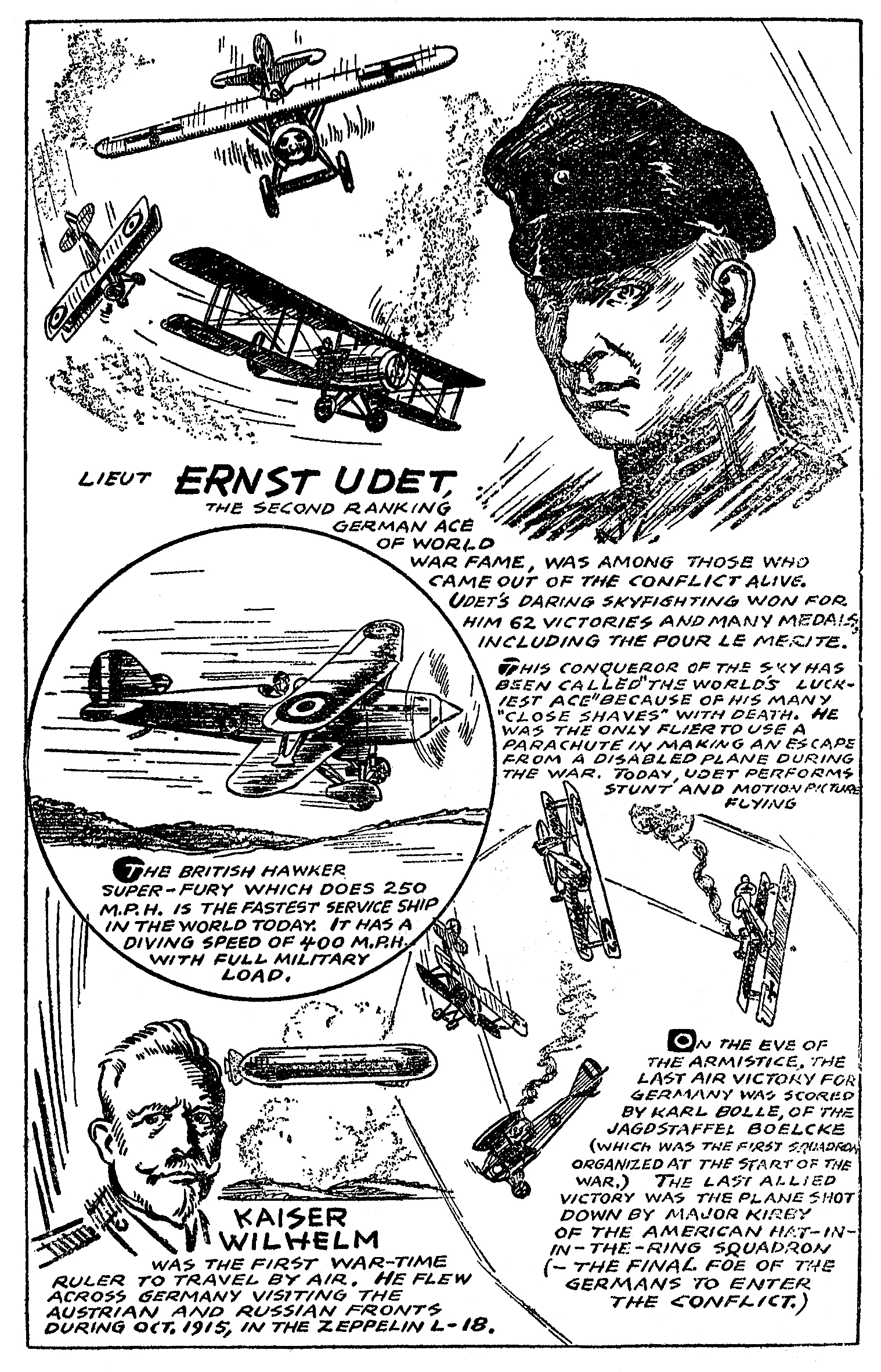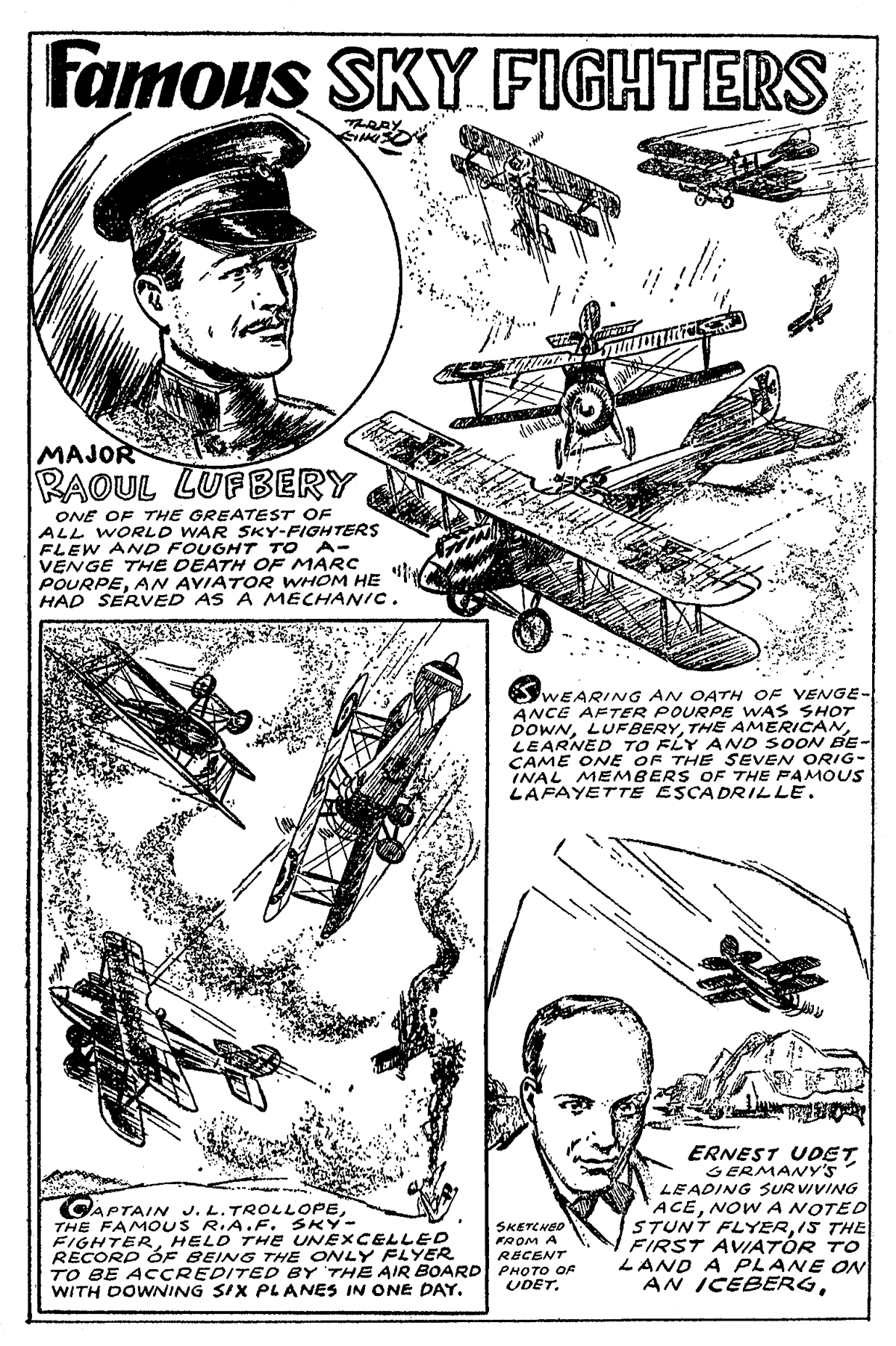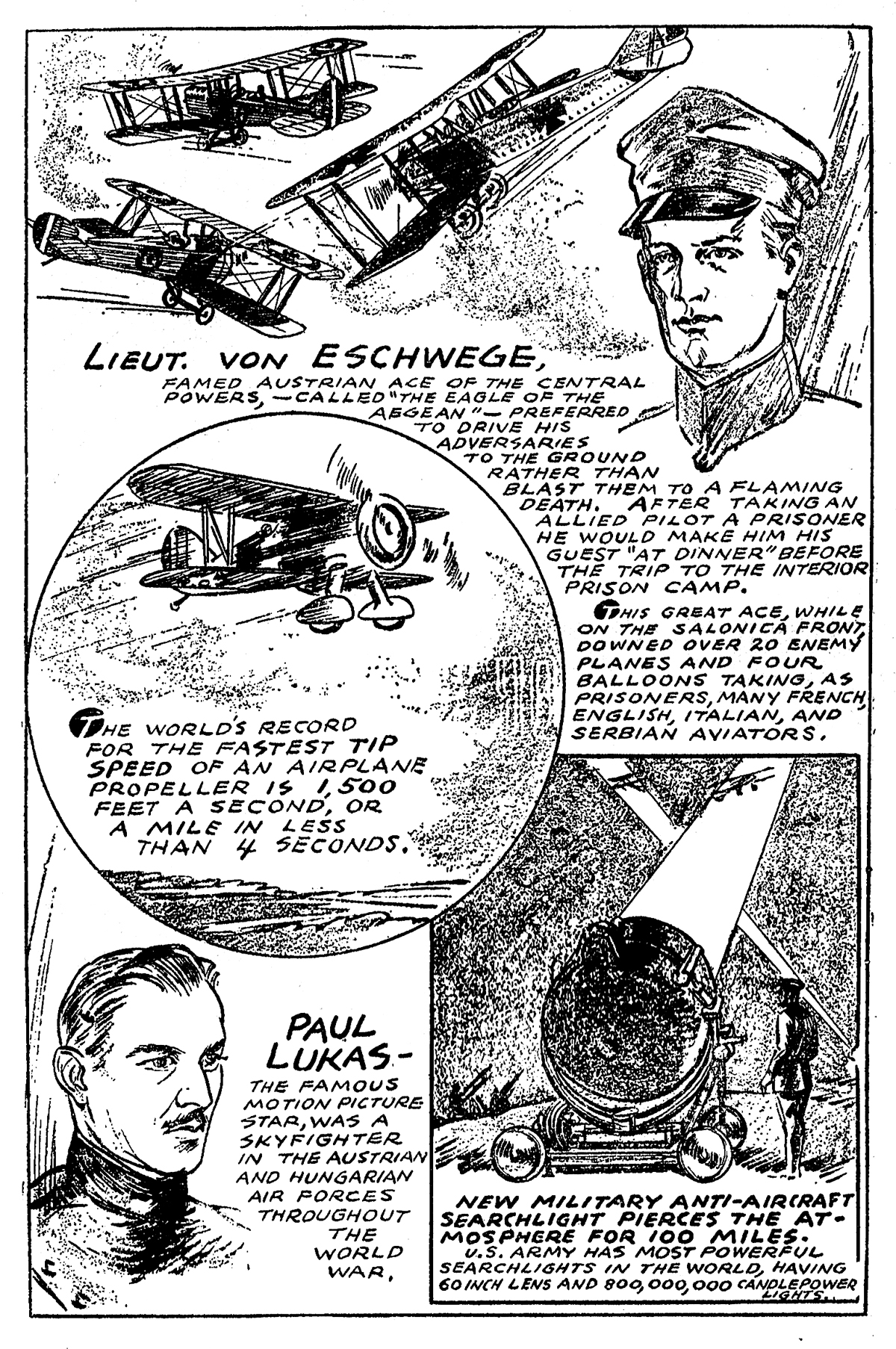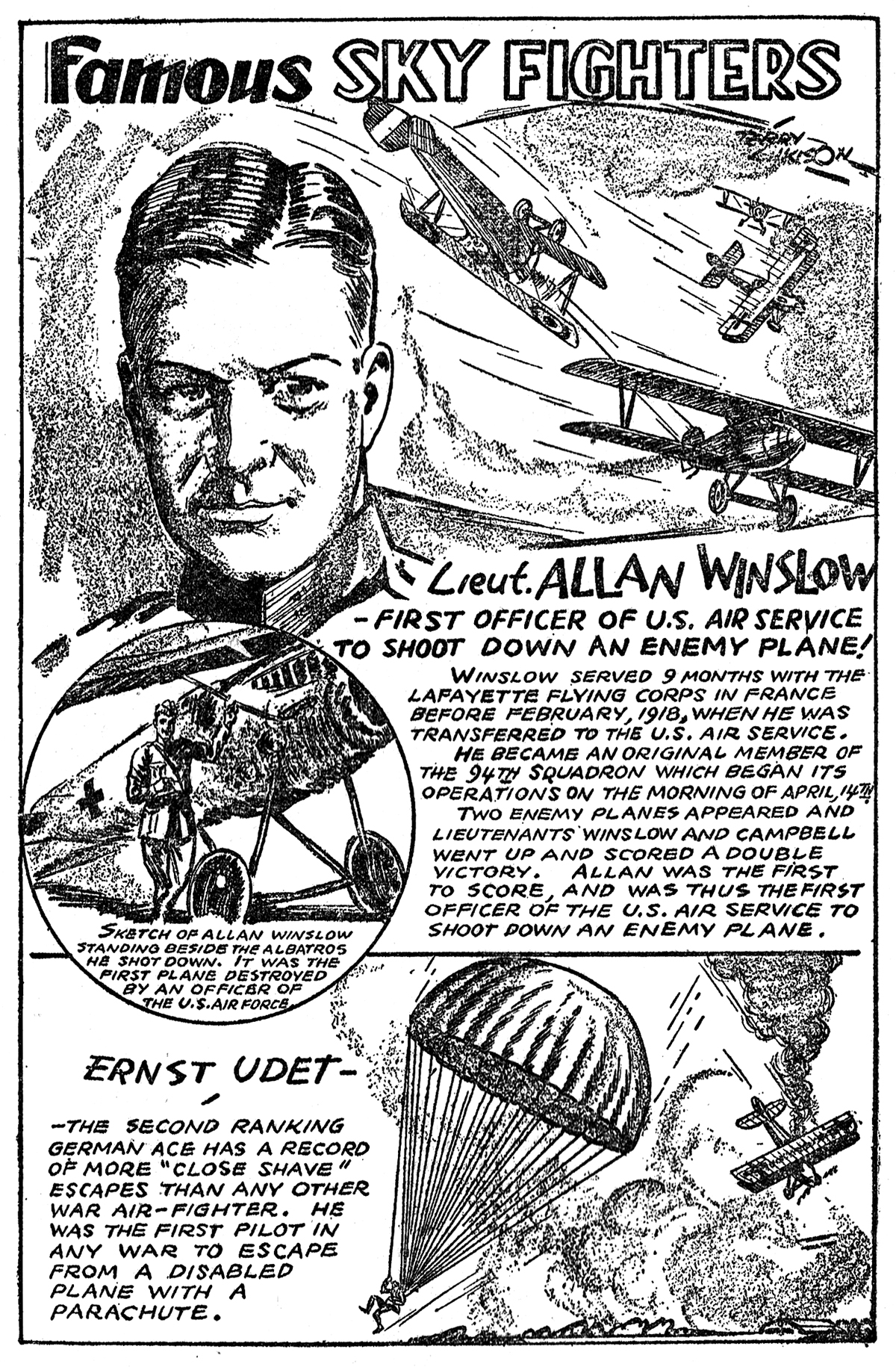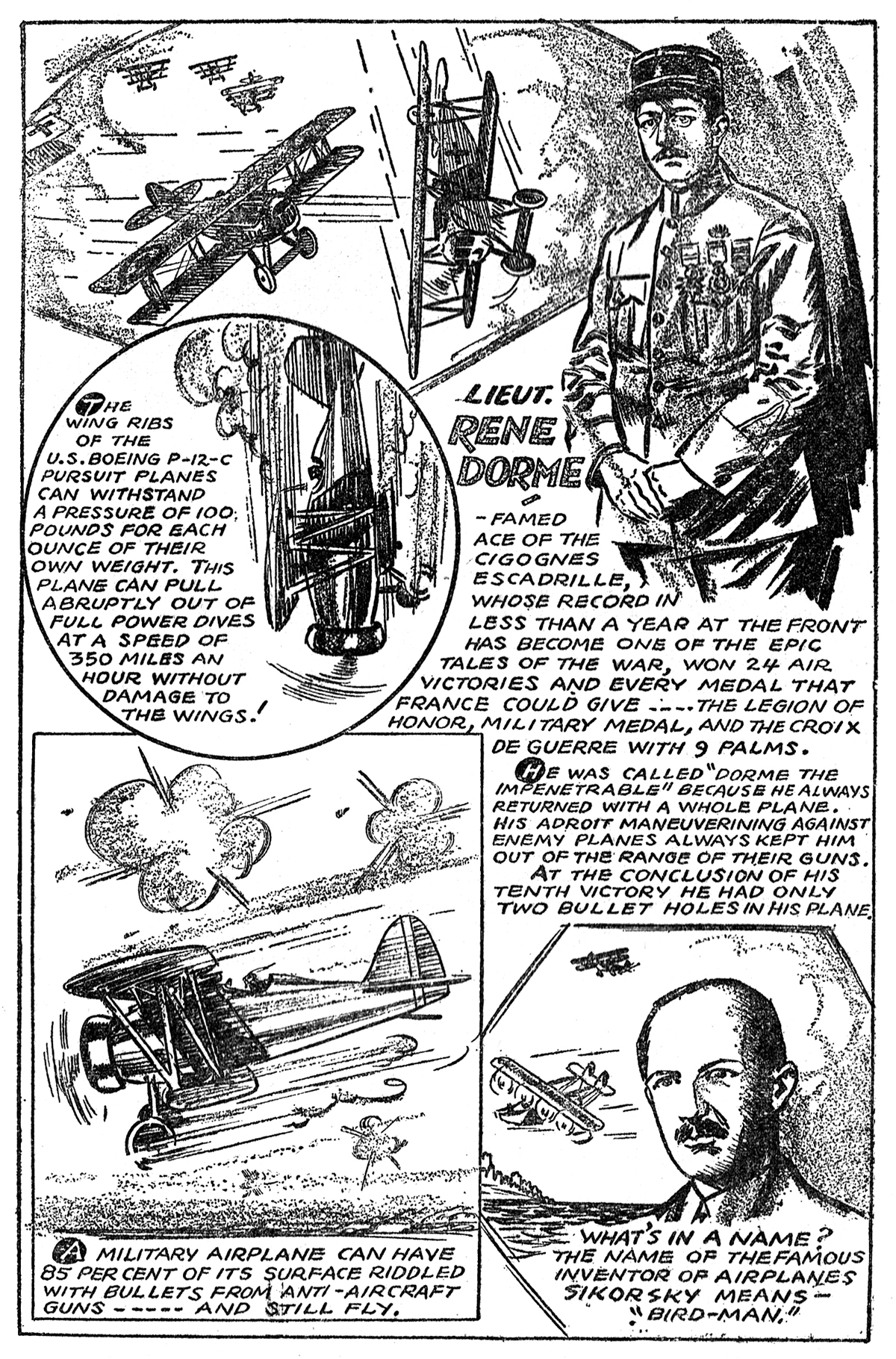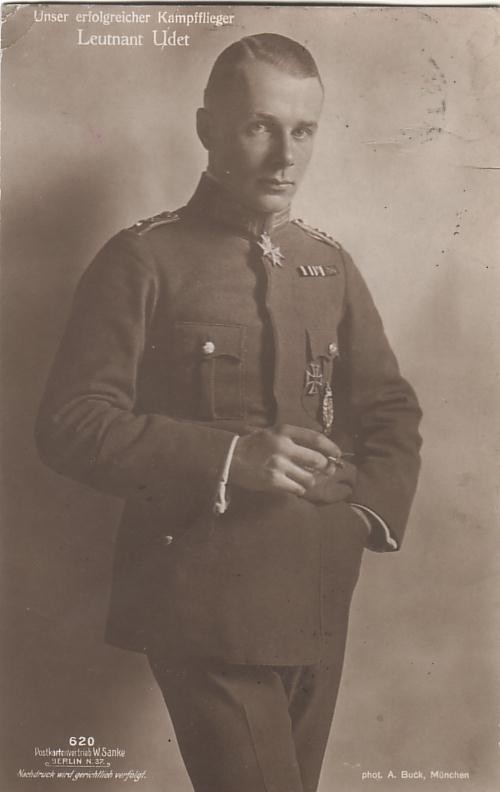“Sky Fighters, January 1937″ by Eugene M. Frandzen
Eugene M. Frandzen painted the covers of Sky Fighters from its first issue in 1932 until he moved on from the pulps in 1939. At this point in the run, the covers were about the planes featured on the cover more than the story depicted. On the January 1937 cover, It’s the Morane-Saulnier Parasol type monoplane!
The Ships on the Cover
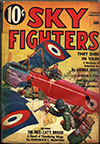 THE Morane-Saulnier Parasol type monoplane was used back in 1914 by the French Army for artillery spotting. As the war continued the Parasols were improved each year but they were still doing their work mainly on reconnaissance missions. These sleek little ships were too speedy targets for most opponents, very unlike the majority of two seaters. They could climb well but they had tricks to play on their own pilot if he didn’t know their temperamental shortcomings.
THE Morane-Saulnier Parasol type monoplane was used back in 1914 by the French Army for artillery spotting. As the war continued the Parasols were improved each year but they were still doing their work mainly on reconnaissance missions. These sleek little ships were too speedy targets for most opponents, very unlike the majority of two seaters. They could climb well but they had tricks to play on their own pilot if he didn’t know their temperamental shortcomings.
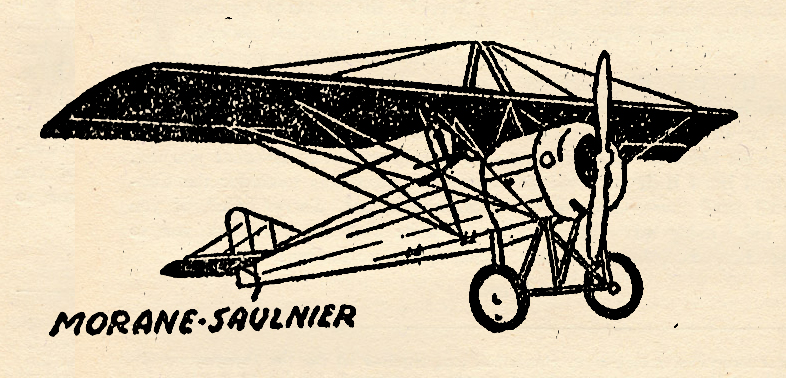
To be taken prisoner by the enemy was usually not such a harassing experience as would be expected. The airmen of both sides were usually gallant foes. If an opponent was knocked out of the skies he was in for a long siege in prison and concentration camps. If he was wounded he got good medical attention before being jailed. Even if he set fire to his crashed plane so that the enemy couldn’t salvage parts he still got a break. Both Germans and Allies did this so it was even Steven.
The New Prop-Firing Gun
Roland Garros, the famous French aviator who first rigged a machine-gun to fire through the whirling propeller arc, was ignominiously forced down behind the German lines. That was a calamity for the Allies, because on the Morane-Saulnier Garros was flying was fixed his new prop-firing gun. He tried desperately to destroy his plane and gun but the German foot soldiers swarmed down on him, put out the fire he had started and discovered his secret gun. The Germans were elated. They considered this prisoner one to be guarded with extra care. They confined him and insisted he sign a record book every half hour. Even with these precautions he escaped.
If an aviator was forced down and showed fight it was just too bad, for after all he was an enemy. Frank Luke, our famous balloon buster, didn’t know what the word surrender meant. He was in the war to fight. He didn’t expect to come out alive. He didn’t like his flying mates. They didn’t like him. His job was to kill Germans, which he did to his last gasping breath. After downing several balloons he was forced down in enemy territory where he was given a chance to give himself up peaceably. He scoffed at the idea, unlimbered his .45 and staged a running fight with infantry. He was killed.
Lieut. W.B. Wanamaker of the 27th Squadron was shot down by Ernst Udet, the now famous German stunt flyer. His plane was badly wrecked and he was badly injured. The German foot soldiers would not help him until Udet landed, took personal charge and saw that Wanamaker was given medical attention and treated like an honorable enemy.
It was not unusual on our side of the lines to bring in a captured Germany flying officer and give him a royal reception at the home tarmac before he was sent back to prison.
An enemy is dangerous as long as he is armed and on his own territory. When one lone opponent is surrounded by the other side and surrenders he ceases to be the foe you’ve been looking for. You’ve got him. Congress, the Kaiser, the King and other tops have made all officers gentlemen, therefore they usually acted as such,
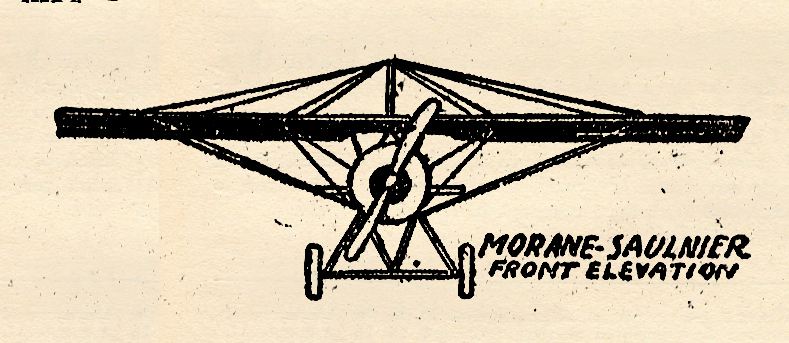
Shrapnel Finds Its Mark
The Morane-Saulnier on the cover was ranging back and forth over German targets when the pilot was hit by a tiny pellet of shrapnel from a German A.A. gun. The Morane with an A-No.1 pilot at the stick was a temperamental gal at its best, but with a pilot badly wounded it took the shortest path to the ground and pancaked behind the German lines. The observer could not burn his plane because the pilot was still alive. He saw two German soldiers rushing towards him. He motioned that he was giving up without a fight by raising his hands. One German soldier came closer. Suddenly he yanked out a Luger and blazed away at the Allied Observer. Down came the Yank’s hands, the Lewis gun snapped to the right. It smashed the German to the ground, unconscious. Back swung the Lewis to the left. A stream of slugs whistled from it at the other German who had now opened fire. One of the slugs smashed the blazing Luger from the enemy’s hand. The Yank ceased firing and brought his sights to bear on an approaching German air officer. The German officer raised his hands and continued to advance. “You are right,†he informed the Yank, “I saw the whole thing. I will not trick you as the soldiers did.â€
The Yank climbed out. The two airmen from different sides of the line lifted the unconscious Allied pilot from the front pit. The German officer ordered first aid treatment given to the Allied pilot before the German soldiers who had showed such poor sportsmanship could have their wounds dressed.
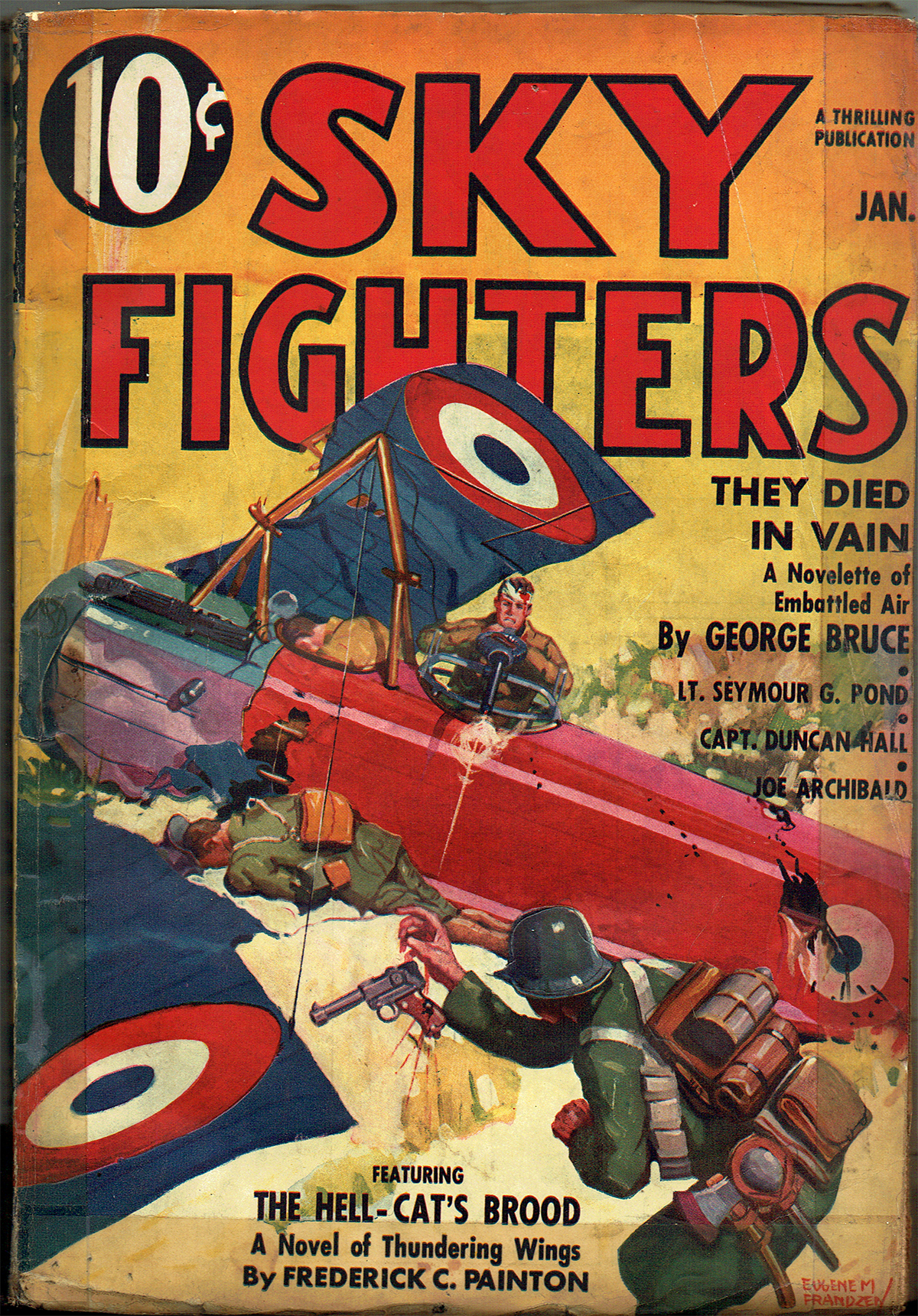
Sky Fighters, January 1937 by Eugene M. Frandzen
(The Ships on The Cover Page)









